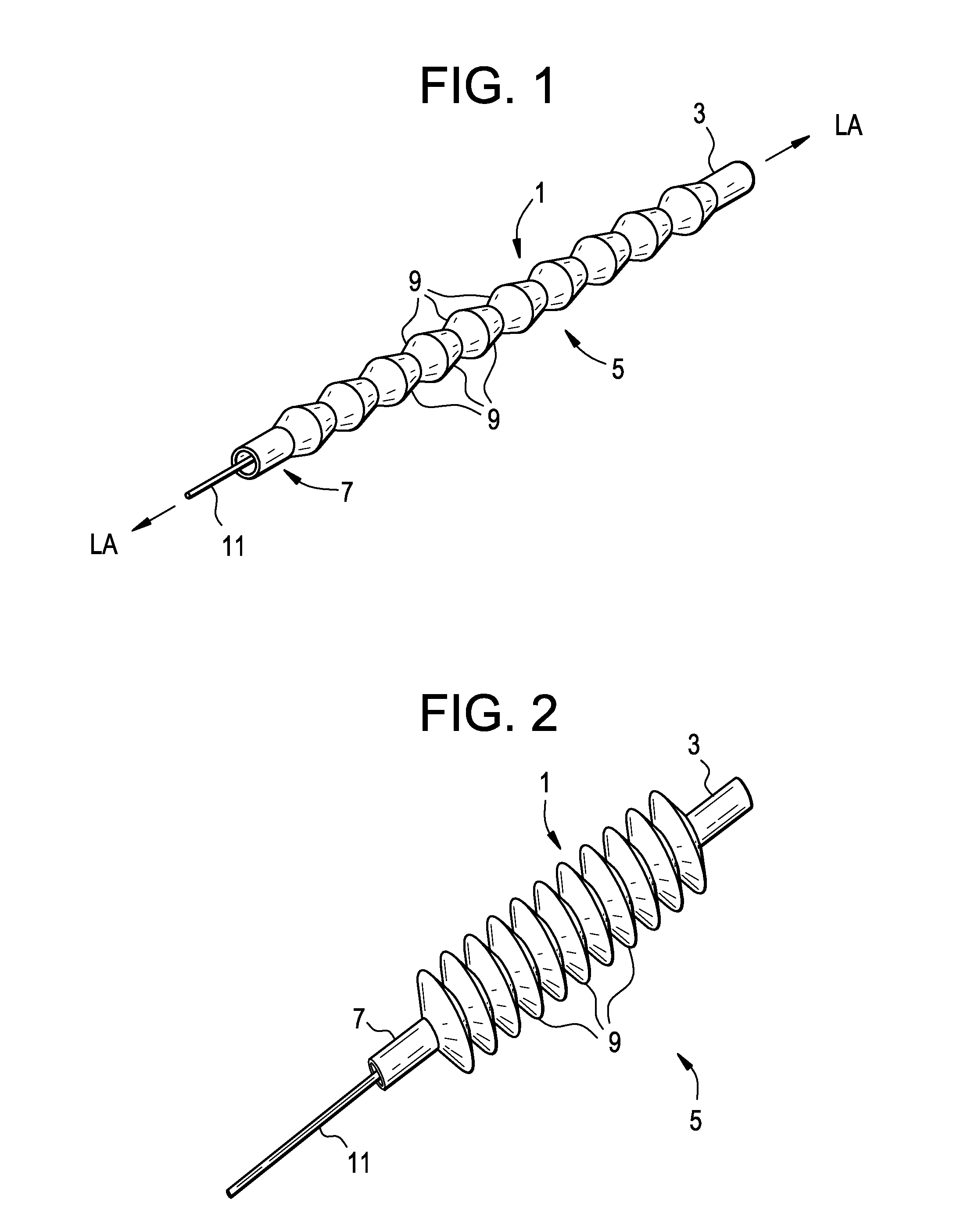Bellows-Like Expandable Interbody Fusion Cage
- Summary
- Abstract
- Description
- Claims
- Application Information
AI Technical Summary
Benefits of technology
Problems solved by technology
Method used
Image
Examples
Embodiment Construction
[0024]Now referring to FIGS. 1 and 2, there is provided an intervertebral fusion device for fusing an intervertebral disc space, comprising:[0025]a) a tube 1 having a distal end portion 3, an intermediate portion 5, a proximal end portion 7, a longitudinal axis LA, and comprising a plurality of pleats 9 arranged substantially perpendicular to the longitudinal axis, and[0026]b) a first cable 11 disposed within the tube,
wherein the cable is fixed to the distal end portion of the tube,
wherein the tube has a radially collapsed configuration (FIG. 1) when the first cable is relaxed and a radially expanded configuration (FIG. 2) when the first cable is tensioned.
[0027]In some embodiments, the intermediate portion of the tube bulges when in its expanded configuration. In some embodiments thereof, the pleats are spaced relatively close in the distal and proximal end portions of the tube in its collapsed configuration, and relatively distant in the intermediate portion of the tube in its col...
PUM
 Login to View More
Login to View More Abstract
Description
Claims
Application Information
 Login to View More
Login to View More - Generate Ideas
- Intellectual Property
- Life Sciences
- Materials
- Tech Scout
- Unparalleled Data Quality
- Higher Quality Content
- 60% Fewer Hallucinations
Browse by: Latest US Patents, China's latest patents, Technical Efficacy Thesaurus, Application Domain, Technology Topic, Popular Technical Reports.
© 2025 PatSnap. All rights reserved.Legal|Privacy policy|Modern Slavery Act Transparency Statement|Sitemap|About US| Contact US: help@patsnap.com



